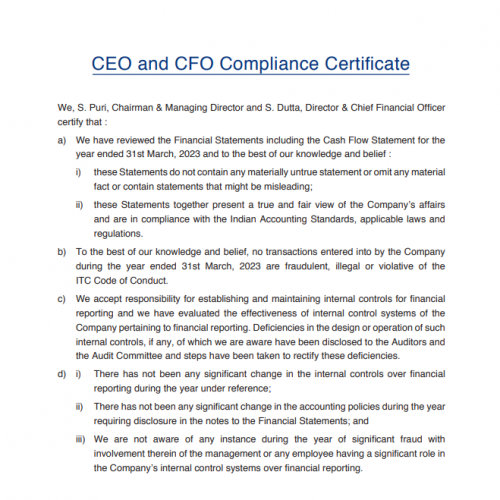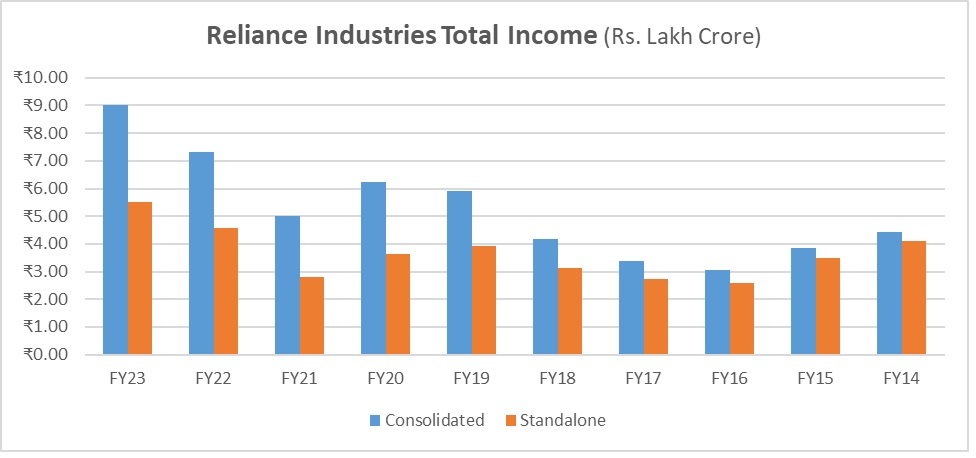Chapter 3: Know Your Financial Statements
Once you know the game, it is time to understand your players, their performance, strengths, and weaknesses. This chapter will briefly introduce the financial statements and annual reports relevant to fundamental investors, explain their structure, and tell you where to find them.
We all love a good biopic, right? It’s the story of a person’s life condensed into two riveting hours. Exciting stories of interesting people are sometimes inspiring, sometimes emotional, but always enlightening.
What would you say if we told you that every company in the world, no matter how big or small, has produced its biopic? It is not just a vague, generic story but a detailed narration of all it has been through, achieved, or lost on its way to becoming the institution it is today. Don’t believe us? We’ve got proof!
Annual reports are a company’s biopic. Each company’s annual report is different from another because each company has other ambitions, ways of working, and targets. However, they all use a standard corporate production style, making them easier to review and compare.
Components of an annual report
- Introduction to the company’s business: Just like how every character is introduced and their importance is established at the movie’s start, the annual report presents the company, its values, business segments, and its contribution.
- Financial highlights: It’s like the movie trailer, where the company highlights the leading financial figures, key performance indicators, and ratios to give an investor a snapshot of the year it was. This data is presented in a visually appealing manner through colorful charts and graphs.
- The Management Statement: It is a statement from the company’s top management (chairman) addressing the shareholders about the company’s achievements, focus, and outlook. If you read carefully, you will understand the involvement of the top management and how realistic the outlook is—whether the top management’s vision for the company is in sync with the strategy and numbers.
FYI: The 400-page annual report has an index for easy navigation. So you better check that out first.
- Management Discussion & Analysis: These are like Behind-the-scenes interviews with the film director. Here, the company’s management (CEO, CFO) talks about the overall economic scenario, industry environment, challenges and outcomes, particular strategies, and how they performed in this environment as a company and as specific segments. They might even back their story with particular numbers and explain their importance.
- Financial Statements: The main characters make the final entry in the form of tables and data in the standard format that complies with the Indian Accounting Standards (IAS). These reports are standardized so you can compare the numbers with those of competitors to understand the performance better. Unless the parameters are the same for all players, you can’t identify who is ahead and behind at the corporate box office.
Every company’s annual reports have three financial statements:
- The Profit & Loss Statement – It’s your ‘common man’ protagonist telling you about a typical day in the life of a company: how much it sold, how much it spent during the period, and what was left at the end of the quarter/financial year.
- The Cash Flow Statement – It’s the ‘money-minded’ protagonist who only talks cash and removes anything non-cash. It tells you how much money came in and went out and what is left.
- The Balance Sheet – It is like a dated family photograph. The balance sheet tells you what the situation was like on that date. What the company owned and what it owed as of 31st March XXX.
In the later chapters, we will discuss our three protagonists in length and how they are intertwined to make a perfect business story.
6. 10-year Financial highlights: Once you have a clear idea of the company’s performance this year, the audit report provides a 10-year financial flashback to show a historical trend and how far it has come, followed by outlook or mid-term guidance.
Suppose you carefully skim through the annual report of any large-cap company, such as ITC, HDFC, or Reliance Industries. In that case, you will see a well-presented report telling the company’s story.
The Securities Exchange Board of India (SEBI) requires all companies listed on the stock exchange to follow Listing Obligations and Disclosure Requirements (LODR).
The SEBI requires companies to prepare and disclose financial statements in a prescribed format (Annexure - 1) every quarter of the financial year.
Here, we will pause and understand a few terms that will frequently appear throughout the module.
Financial year: For most Indian companies, the financial year is from April 1 to March 31. A financial year from April 1, 2023, to March 31, 2024, is written as FY 23-24 or FY24. However, some companies may have a different financial year. Until 2020, Nestle India followed the 1st January – 31st December financial year. However, it changed to the April-March FY format in 2024.
Quarter: A quarter is three months. A single FY has four quarters ending in June, September, December, and March.
Quarter | Months | Accompanying Financial figures |
Q1 | Apr-Jun | – |
Q2 | Jul-Sep | Half Yearly |
Q3 | Oct-Dec | Nine months |
Q4 | Jan-Mar | Full Year |
Financial Statements – break up of quarterly statements
The process of releasing financial statements
The company prepares the financial results and submits them to the Board, Chief Executive Officer, and Chief Financial Officer for approval. Their approval certifies that the financial results do not contain any false or misleading statements or figures and do not omit any material fact that may make the statements or figures contained therein misleading.
Company’s Board
The board of directors is the company’s governing body. Shareholders elect these directors to oversee the company’s management, participate in major business decisions, and protect the interests of shareholders.

In other words, the financial statement contains data coming directly from the source and is, therefore, the most authentic information compared to a news report, which may contain data entry errors.
(i) Audited / Unaudited
The company has to get its reports audited by an external auditor. However, the stock exchange allows companies to submit audited or unaudited quarterly financial statements within 45 days of the end of the quarter. If the statements are unaudited, they should be approved by the Board. Hence, you may see two “Q1 FY 23-24 reports” of the same company – Audited and Unaudited.

Audited reports are more accurate as the figures in them have passed through the keen eyes of the auditor. The company will state the audited figures in the next report if there is a major discrepancy between audited and unaudited reports. The company clearly states which figures are audited and which are not. It uses the audited figures in all future correspondences.
In the above example, HDFC has stated the unaudited figures of 2023 and compared it with the audited figures for 2022.
(ii) Consolidated / Standalone
You might also have encountered multiple financial statements that look the same with a slight tweak—the headline states “Consolidated statement” and “Standalone statement.”
For some companies, the figures are almost similar, and for some, there is a significant gap. Why so?
Standalone statements are the financial figures of the parent company, while a consolidated statement includes the consolidated financial figures of the parent and its subsidiaries. Standalone and consolidated statistics are similar for companies with no subsidiaries, like ITC and Zomato.
For instance, Company A has a subsidiary X. In FY23, Company A reported a loss of Rs 100 crores, but X reported a profit of Rs 40 crores. Here, the standalone loss of Company A will be Rs 100 crore, whereas the consolidated loss of Company A will be Rs 60 crore (as it includes the Rs 40 crore profit of subsidiary X).
Which is a better statement - consolidated or standalone?
A consolidated statement gives a comprehensive view of the overall business. For instance, Reliance Industries’ (RIL) standalone figures are for its oil and chemical business. Jio and Reliance Retail are subsidiaries or Group companies of RIL.

Reliance Industries’ FY23 standalone total income was Rs. 5.53 lakh crore, while its consolidated total income was Rs. 9.03 lakh crore. This gap in standalone and consolidated figures widened as the total income of its telecom and retail businesses increased.
In this case, RIL’s consolidated figures give you a better understanding of the company’s financial health. However, the company also releases standalone figures for Jio, Reliance Retail, and other significant businesses. This will help you compare the performance of Jio with its rivals Airtel and Vodafone Idea.
The most authentic financial statement of a company is the audited consolidated statement. For a fundamental investor, it is THE Statement he/she needs. (Psst! Warren Buffett, Ray Dalion, and Peter Lynch, all famous billionaire investors, spent most of their time reading the annual reports and financial statements of the companies they had invested in or were interested in.)
Returning to the process…
The stock exchange allows listed companies to file and publish unaudited/audited financial statements within 45 days from the end of the quarter. These statements are found on the stock exchange’s website and the company’s Investor Relations page.
After the earnings are released on the exchange, major companies hold an ‘Earnings Call’ during which management presents the earnings to the media and shareholders. The Investor Relations page contains the earnings call transcript and the slide presentation (if any) used by the management during the call.
Some companies also issue a media release that gives a synopsis of the overall financial performance. This will cover the main points of the earnings.
Tip: The stock market is generally volatile during the earnings season. You might see high momentum in stocks before and after the earnings release.
NSE’s website: https://www.nseindia.com/companies-listing/corporate-filings-financial-results
Now that you know the various characters in a company’s biopic and their role, it is time for the story to begin.
Summary
- The key to knowing your company is from its annual report and financial statements.
- The annual report is like a company’s autobiography that tells its story about the year it was. Every annual report has standard components: A business overview, management disclosure and analysis, financial statements, and 10-year financial highlights.
- Audited/Unaudited statements: The board, CEO, and CFO approve the unaudited statements, and the auditors review the audited ones for false or misleading statements and figures.
- Standalone/Consolidated statements. The standalone statements depict the financial figures of the parent company, while the consolidated statement includes the economic figures of the parent and the Group of companies.
- A company releases quarterly financial statements on the stock exchange and its Investor Relations segment within 45 days of the end of the quarter.